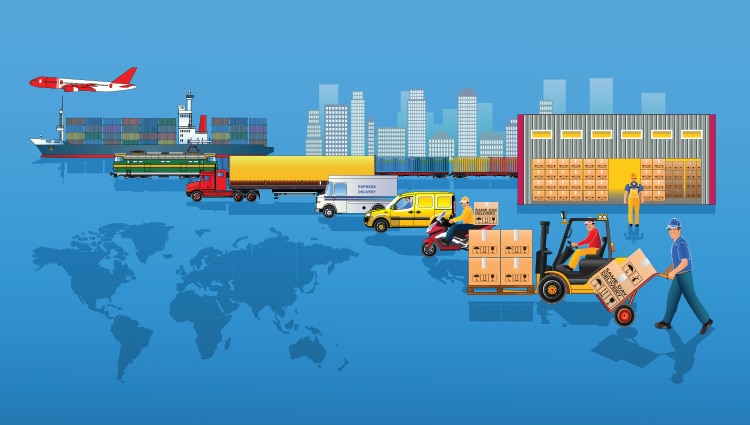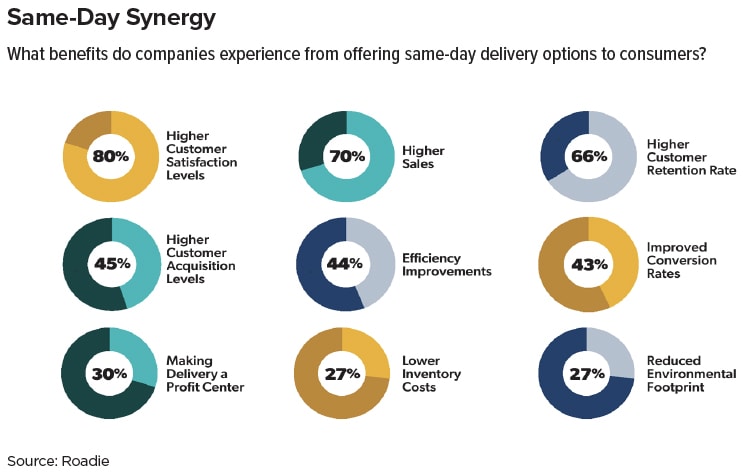New Global Sourcing Hotspots & Other Logistics News

Are companies moving their supply chains away from China? Plus, reactions to the White House’s update on cybersecurity and new data on same-day delivery.
Supply Chains Search for New Sources
All eyes are on emerging markets as logistics and supply chain professionals look for the next opportunity to combat an uncertain global economic climate. These executives also remain wary of recession, express concerns over elevated costs, and expect supply chains to continue moving out of China, according to the newly released Agility Emerging Markets Logistics Index.
The Index ranks countries for overall competitiveness based on their logistics strengths, business climates, and digital readiness—factors that make them attractive to third-party logistics providers, freight forwarders, air and ocean carriers, distributors, and investors.
Here are some key findings from the 2024 Index:
- India, Europe, and North America rank ahead of China as destinations executives expect to move production to in 2024 and onwards.
- A large percentage of executives see increased risk/decreased rewards in emerging markets.
- Many see India growing in importance as a producer and market, but cite inadequate infrastructure and corruption as the biggest obstacles there.
- Many predict a surge in Africa investment.
- 66% say climate change is something they’re planning for, or is already affecting their businesses.
Readers React: New Cybersecurity Executive Order
To address growing concern over cyber threats, President Biden signed an executive order amending regulations designed to safeguard U.S. vessels, harbors, ports, and waterfront facilities. The order aims to further protect these assets against cyber attacks and other threats.
Here’s what Inbound Logistics readers say about this new action:
“The new executive order will give the U.S. Coast Guard greater authority to enforce cybersecurity requirements. Securing the maritime sector is an essential part of building resilient supply chains.”
—Abe Eshkenazi, CEO, Association for Supply Chain Management (ASCM)
“This is a critical step forward in protecting U.S. ports. We also have to pay attention to common wireless vulnerabilities. Attacks leveraging wi-fi, Bluetooth, and IoT protocols may be used to access authorized infrastructure including IT and OT systems.”
—Dr. Brett Walkenhorst, CTO, Bastille
“This is a crucial advancement. Cyberattacks serve as stark reminders of the cascading impacts on America’s shipping ports and the U.S. economy. Employing due diligence and verifying partnerships are also key to mitigating external risks.”
—Cole Garson, COO, Remcoda
Is Same-Day Delivery Worth the Hype?

While implementing same-day delivery presents challenges, many companies say that the benefits are worth it. A majority of companies (80%) say they increased revenue after implementing same-day delivery, according to new research from Roadie, a UPS Company that offers a logistics management delivery platform.
The research, which provides an overview of the challenges and benefits associated with implementing same-day delivery services, finds that nearly one-third of retailers report a revenue increase of more than 10%. Executives also cite benefits including higher customer satisfaction (80%), and an increase in sales (70%) and retention rates (66%).
Additional research highlights include:
- Most companies (63%) offering same-day delivery have done so for three years or more.
- 68% report that same-day delivery ROI consistently increased each year.
- Companies say that growing ROI unlocks insights that help them make decisions about:
‣ Product and service offerings (65%)
‣ Expansion of same-day delivery in new regions (59%)
‣ Warehouse space (54%)
‣ Distribution facility locations (51%)
‣ Logistics investments (45%)
‣ Labor (37%)
One caveat: The transition to same-day delivery introduces higher operational costs for most companies surveyed, who report the need for innovative pricing strategies to mitigate these expenses.
